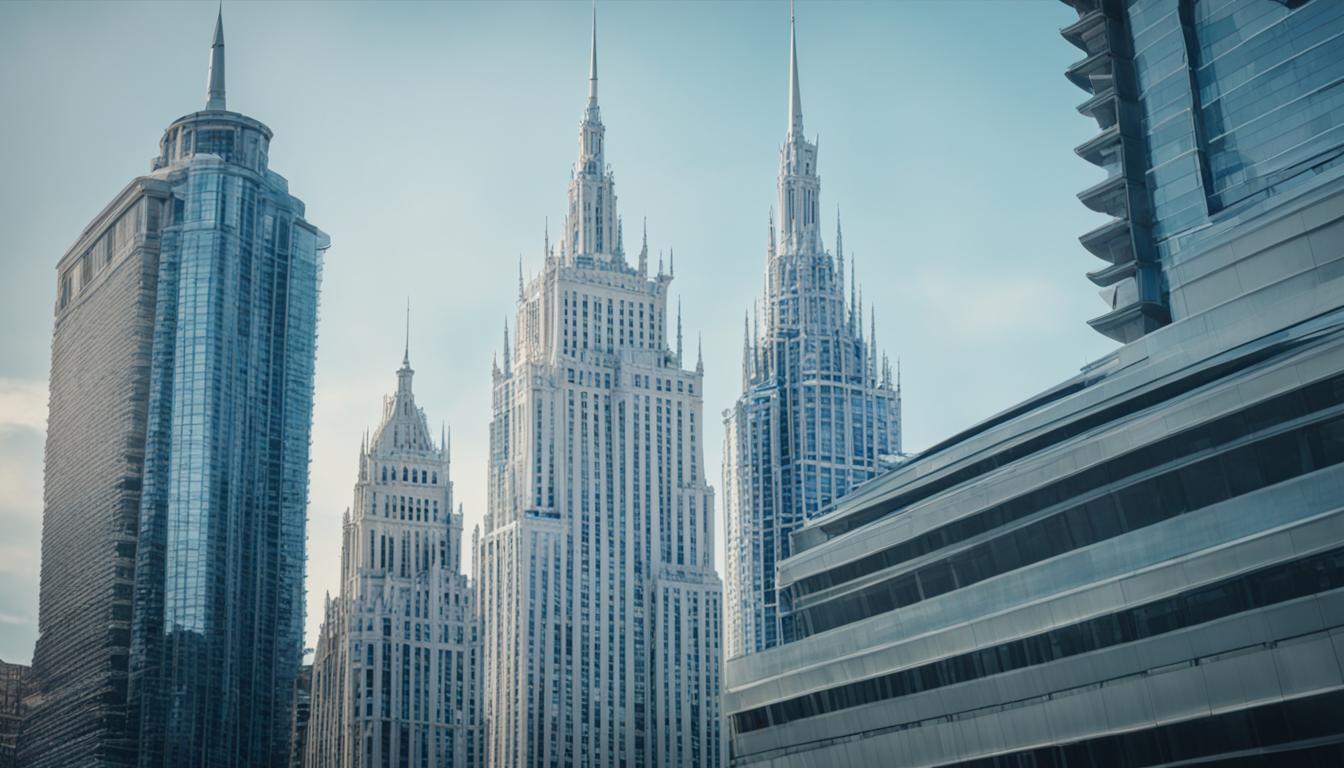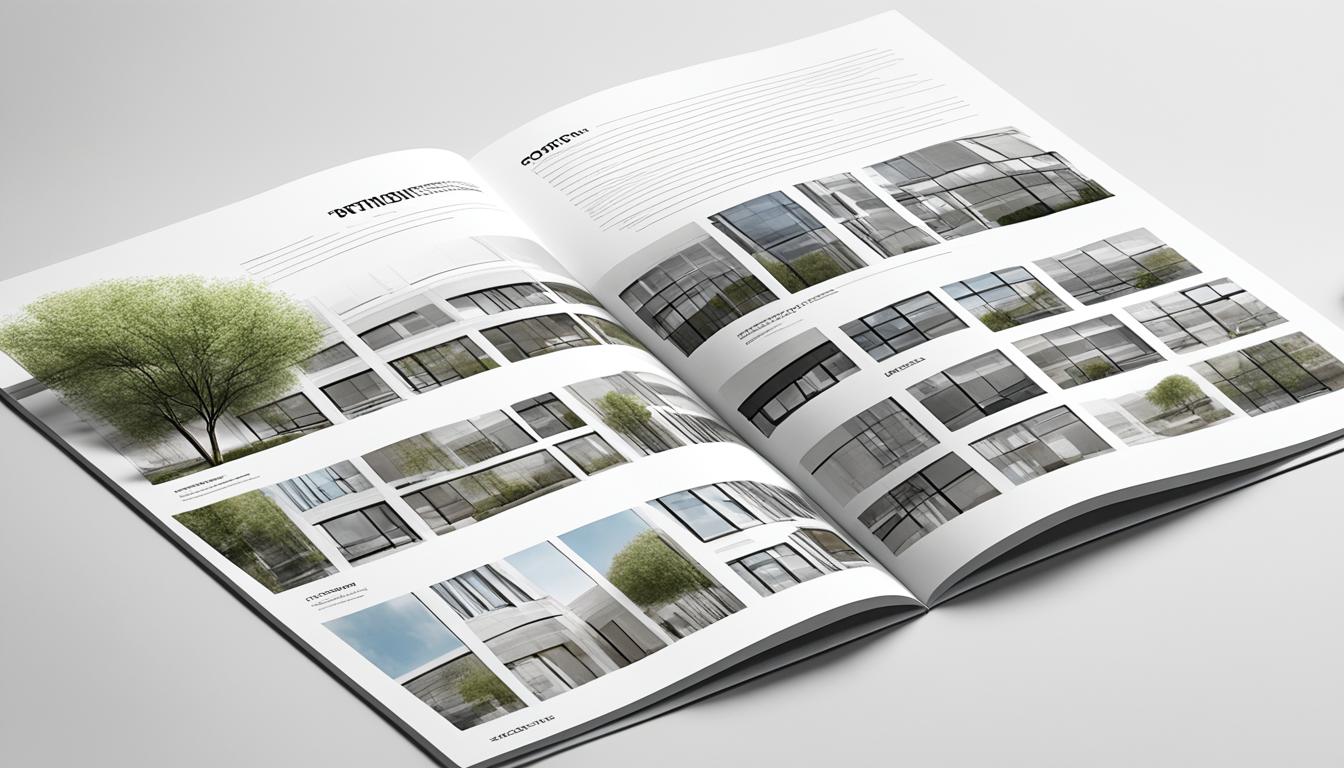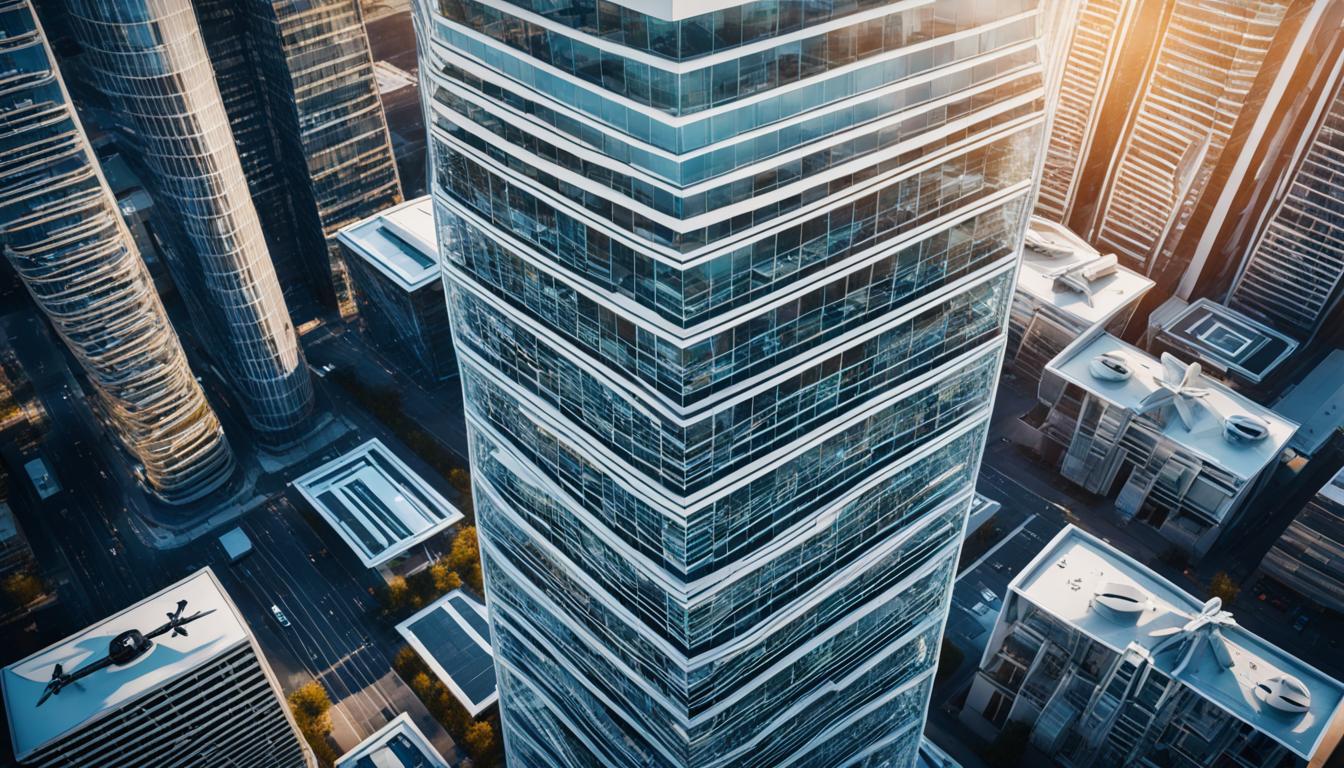When it comes to architectural photography, capturing stunning images is just one part of the equation. As photographers, we must also navigate a range of legal considerations to protect our work, rights, and reputation. From understanding architecture copyrights and photography rights to obtaining building and property releases, and creating clear contracts, it’s essential to have a solid understanding of the legal landscape in this field. In this article, we will explore the key legal considerations in architectural photography and provide practical tips to ensure you are fully informed and prepared.
Key Takeaways:
- Understand copyright laws to protect your intellectual property as an architectural photographer.
- Obtain property releases to legally use photographs featuring private properties.
- Create clear photography contracts and agreements to establish terms and protect your rights.
- Consider professional liability insurance and obtain model releases when photographing people within architectural spaces.
- Stay informed and seek legal advice when needed to ensure compliance with copyright laws and other legal requirements.
Protecting Your Intellectual Property: Understanding Copyright Laws
Copyright laws are vital for safeguarding your intellectual property as an architectural photographer. As the author of your work, you automatically own the copyright upon creation. However, it is recommended to register your copyright with the Copyright Office to strengthen your legal grounds for enforcement.
Registering your copyright provides additional protection, allowing you to swiftly address any unauthorized use of your images. By prominently displaying your registered copyright symbol (©) on your work, you can deter potential infringers and assert your rights.
When it comes to managing copyright, it’s essential to remain proactive. Regularly monitoring online platforms and conducting reverse image searches can help identify unauthorized uses of your work. When detected, you can take appropriate action such as sending cease and desist letters or filing infringement claims to protect your rights as a photographer.
Infringement Example:
“The unauthorized use of my architectural photograph on a commercial website clearly violated my copyright. After sending a cease and desist letter, the website promptly removed the image and agreed to compensate me for unauthorized usage.”
An important aspect to consider is ensuring that any photographs taken by employees or interns are protected by written work-for-hire agreements. These agreements clarify that the employer, rather than the individual taking the photographs, owns the copyrights in those works.
| Situation | Action |
|---|---|
| Register your copyright | File an application with the Copyright Office to obtain legal protection and enforcement rights. |
| Display the copyright symbol | Visibly indicate your copyright on your work, deterring unauthorized usage. |
| Monitor online platforms | Regularly check for unauthorized uses of your images and take appropriate action. |
| Use work-for-hire agreements | Ensure that photographs taken by employees or interns are covered by written agreements. |
Understanding copyright laws is essential for protecting your intellectual property and preserving the value of your architectural photography. By securing your rights, you can confidently showcase your work and maintain control over its usage.
Obtaining Property Releases: Permission to Use Architectural Photographs
When photographing buildings, especially privately owned ones, it is often necessary to obtain property releases. A property release is a legal document that grants permission to use photographs featuring properties for licensing or marketing purposes. As architectural photographers, we must understand when and how to obtain property releases to avoid legal complications and protect our work.
The need for a property release depends on various factors, including the recognizability of the property, its age, and whether it can be seen from public spaces. While some buildings may be considered public domain and do not require a release, others might require explicit permission from the property owner or manager.
By obtaining property releases, we can ensure that we have the necessary legal rights to use and distribute our architectural photographs. These releases not only protect us from potential legal actions but also provide peace of mind and create a transparent relationship with property owners.
A well-drafted property release should clearly outline the scope of usage, including whether the images will be used in print, online, or for commercial purposes. It is essential to maintain a copy of the signed release in our records, as it serves as proof of permission for future reference.
“Obtaining property releases is a crucial step in our architectural photography process. It allows us to showcase our work confidently and collaborate with property owners to bring their buildings to life through our lens.”
Understanding the Importance of Property Releases
Obtaining property releases is vital for several reasons:
- Legal Protection: Property releases protect us from potential copyright infringement claims and legal disputes. They provide us with proof of consent, ensuring that we have the right to use and distribute our architectural photographs.
- Client Satisfaction: Obtaining property releases demonstrates professionalism and respect for property owners. It establishes a clear understanding of how our images will be used, fostering trust and collaboration.
- Licensing Opportunities: Property releases make it possible for us to license our architectural photographs for various purposes, such as marketing materials, publications, and educational resources. They open doors to new revenue streams and expand our reach.
How to Obtain Property Releases
When obtaining property releases, follow these steps:
- Identify the property owner or authorized representative: Contact the person responsible for granting permission to use the property photographs. This could be the owner, manager, or other relevant party.
- Explain the purpose of the release: Clearly communicate how the images will be used and the benefits for the property owner, such as increased exposure or potential collaboration opportunities.
- Provide a release form: Use a standardized property release form or consult a legal professional to ensure all necessary elements are included. Make sure the form includes details such as the property description, date of photography, permission to use the images, and any specific limitations or conditions.
- Obtain signatures: Once the property owner or authorized representative agrees to grant permission, have them sign the release form. It’s crucial to obtain the original, signed copy for our records.
Remember, property releases may vary across jurisdictions, so it’s essential to familiarize ourselves with the specific legal requirements and regulations in our area. Seeking legal counsel can provide further guidance and ensure compliance with local laws.
By diligently obtaining property releases, we protect our work, establish professional relationships, and unlock new opportunities in our architectural photography endeavors.

Image: Property releases provide legal permission to use photographs featuring properties for licensing or marketing purposes.
Creating Clear Photography Contracts and Agreements
Photography contracts and agreements play a vital role in establishing clear terms and conditions between photographers and clients. As architectural photographers, it is crucial to have a written contract that outlines the specifics of the project, including the scope of work, image usage rights, and any applicable fees or royalties. Clear and comprehensive contracts not only help avoid misunderstandings but also protect the rights and interests of both parties involved.
When creating a photography contract for architectural projects, consider including the following key elements:
- Project Description: Clearly define the scope and objectives of the project. This includes details such as the location, duration, and purpose of the shoot.
- Image Usage Rights: Specify how the client can use the photographs, whether it’s for commercial purposes, publication, or any other specified usage. Outline any limitations or restrictions on image usage.
- Deliverables: Clearly state the number of final images to be delivered, the format in which they will be provided, and the timeline for delivery.
- Payment Terms: Clearly outline the payment terms, including the total fee, any required deposits, and the payment schedule.
- Additional Services and Expenses: Specify whether any additional services, such as retouching or image licensing, are included or available at an extra cost. State who will be responsible for any additional expenses incurred during the project, such as travel or accommodation.
- Cancellation and Rescheduling: Establish policies for cancellations and rescheduling, including any associated fees or penalties.
- Dispute Resolution: Include provisions for resolving any disputes that may arise during or after the project, such as mediation or arbitration.
Remember to always consult with a legal professional when drafting your photography contracts to ensure they comply with applicable laws and regulations. A well-crafted contract can protect your rights as a photographer, avoid potential conflicts, and ensure that you are properly compensated for your work.
“A clear and comprehensive photography contract is a cornerstone of successful professional collaborations.”
| Key Elements of a Photography Contract | Description |
|---|---|
| Project Description | Clearly define the scope, location, and purpose of the project. |
| Image Usage Rights | Specify how the client can use the photographs and any limitations. |
| Deliverables | State the number of final images, format, and delivery timeline. |
| Payment Terms | Outline the total fee, deposits, and payment schedule. |
| Additional Services and Expenses | Specify additional services and who is responsible for related expenses. |
| Cancellation and Rescheduling | Establish policies for cancellations and rescheduling. |
| Dispute Resolution | Include provisions for resolving disputes. |
Professional Liability and Model Releases in Architectural Photography
As architectural photographers, we must be mindful of our professional liability and ensure that we have the necessary model releases when photographing people within architectural spaces. It is our responsibility to protect both our clients and ourselves from any potential legal issues that may arise.
The Importance of Professional Liability Insurance
Professional liability insurance is crucial for safeguarding our business and finances in case of a lawsuit or damages related to our work. Accidents happen, and even the most careful photographers can face legal claims, whether it’s due to property damage, infringement of privacy rights, or other unforeseen circumstances. Having professional liability insurance provides us with the necessary financial protection and peace of mind knowing that we are covered in the event of such situations.
With comprehensive professional liability insurance coverage, we can focus on capturing breathtaking architectural images without the constant worry of potential legal consequences. It’s important to consult with a trusted insurance provider to ensure that our policy adequately meets our specific needs as architectural photographers.
Securing Model Releases for Privacy and Permission
When photographing architectural spaces that feature individuals, it is vital to obtain model releases. Model releases are legal documents that grant us permission to use photographs featuring people for licensing or marketing purposes. These releases protect the privacy rights of the individuals involved and ensure that we have the necessary permissions to use their likeness.
“Obtaining model releases is not only a legal requirement but also a sign of respect for the individuals we capture in our images. It shows that we value their privacy and are committed to maintaining ethical standards in our work.”
Model releases should include clear details about the intended use of the photographs, compensation agreements, and any other relevant terms and conditions. It’s important to obtain signed releases from all identifiable individuals, including those in the background, to avoid any potential legal complications in the future.
Summary
Understanding our professional liability and obtaining model releases are essential factors in maintaining a successful and legally compliant architectural photography business. By having the right insurance coverage and obtaining the necessary permissions, we can focus on capturing stunning architectural images while protecting ourselves, our clients, and the individuals featured in our photographs.

Next, we will dive into the importance of creating clear and comprehensive photography contracts and agreements. These documents help establish transparent terms and conditions for our clients and ensure that our rights as architectural photographers are protected. Stay tuned!
Conclusion
As architectural photographers, we understand the importance of navigating the legal considerations to protect our work, rights, and reputation. By familiarizing ourselves with copyright laws, obtaining property releases, using clear photography contracts, and considering professional liability and model releases, we can confidently navigate the legal landscape.
When it comes to copyright laws, remember that as the author of your architectural images, you automatically own the copyright upon creation. However, registering your copyright with the Copyright Office provides additional protection and legal grounds for enforcing it. Additionally, ensure that any photographs taken by employees or interns are covered by written work-for-hire agreements.
To avoid legal complications, obtaining property releases is crucial, especially for privately owned buildings. Property releases grant permission to use architectural photographs for licensing or marketing purposes. Be aware of when and how to obtain property releases based on factors like recognizability, age, and visibility from public spaces.
Creating clear photography contracts and agreements is vital in establishing transparent terms and conditions. A written contract helps outline the scope of work, image usage rights, and applicable fees or royalties. Clear contracts prevent misunderstandings and protect your rights as an architectural photographer.
Lastly, it’s important to address professional liability by obtaining appropriate insurance coverage. Professional liability insurance safeguards against potential lawsuits or damages related to your work. Additionally, always obtain model releases to protect privacy rights and ensure necessary permissions when photographing individuals within architectural spaces.
As we continue our architectural photography practice, let’s stay informed, seek legal advice when needed, and adhere to the necessary legal requirements. By doing so, we can confidently capture and share our architectural images while protecting our rights and the work we passionately create.
FAQ
What are the legal considerations in architectural photography?
Legal considerations in architectural photography include copyright laws, obtaining property releases, using photography contracts, and considering professional liability and model releases.
Do I automatically own the copyright to my architectural photographs?
Yes, as the author of your work, you automatically own the copyright upon creation. However, it is recommended to register your copyright for added protection.
How can I protect my intellectual property as an architectural photographer?
To protect your intellectual property, it is important to understand copyright laws, register your copyright, and enforce it if necessary. Additionally, using written work-for-hire agreements can cover photographs taken by employees or interns.
When do I need to obtain property releases for architectural photography?
It is often necessary to obtain property releases when photographing privately owned buildings. The need for a property release depends on factors such as the recognizability of the property and whether it can be seen from public spaces.
What are photography contracts, and why are they important for architectural photography?
Photography contracts are written agreements that outline the scope of work, image usage rights, and fees or royalties. Clear contracts help avoid misunderstandings, protect your rights, and ensure proper compensation for your work as an architectural photographer.
How does professional liability insurance benefit architectural photographers?
Professional liability insurance provides financial protection in the event of a lawsuit or damages related to your work as an architectural photographer. It is essential to understand your professional liability and consider obtaining insurance coverage.
Why are model releases important in architectural photography?
Model releases are necessary when photographing people within architectural spaces. They protect individuals’ privacy rights and ensure that you have permission to use their likeness in your photographs.
How can I navigate the legal landscape of architectural photography?
To navigate the legal landscape of architectural photography, stay informed about copyright laws, seek legal advice when needed, obtain property releases if necessary, use clear photography contracts, consider professional liability insurance, and obtain model releases when photographing people.
Can Legal Considerations Impact Expert Architectural Photography for Real Estate?
When capturing real estate properties, legal considerations can heavily impact the use of expert architectural photography techniques. Understanding property rights, privacy laws, and copyright regulations are crucial for professional photographers. Utilizing these expert architectural photography techniques within legal boundaries ensures high-quality and compliant real estate images.




